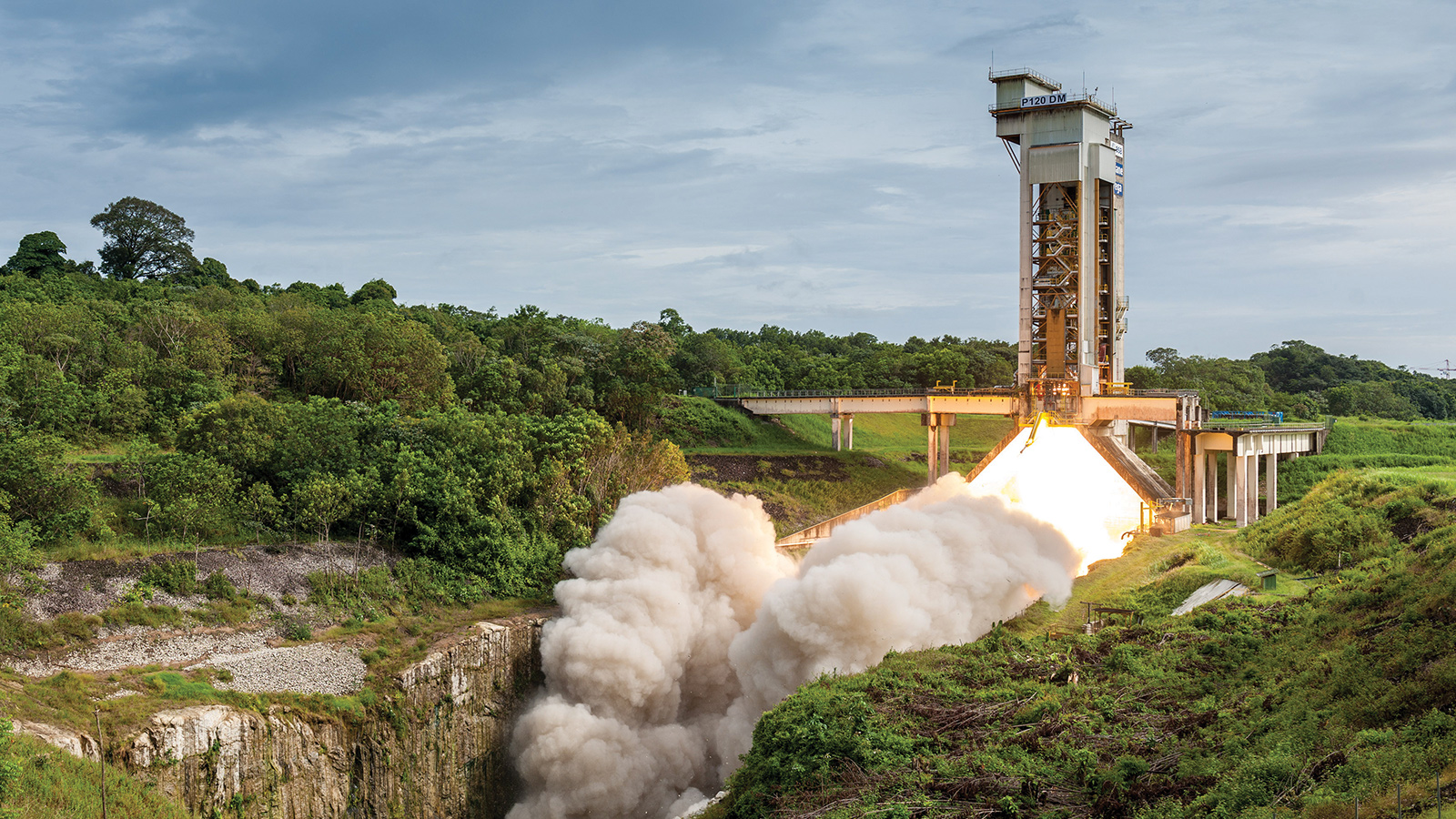Stay Up to Date
Submit your email address to receive the latest industry and Aerospace America news.
The Solid Rockets Technical Committee studies techniques applied to the design, testing and modeling of rocket motors based on solid propellant grains.
A United Launch Alliance Delta 4 rocket took off in January from Vandenberg Air Force Base in California to deploy a national defense satellite for the National Reconnaissance Office to low Earth orbit. The rocket was powered by two 60-inch-diameter Graphite Epoxy Motors supplied by Orbital ATK, now Northrop Grumman Innovation Systems. The two 53-foot-long GEM 60 boosters, manufactured in Magna and Clearfield, Utah, burned for approximately 90 seconds while producing 2,490 kilonewtons of thrust. Later in the month, a ULA Atlas 5 launched from Cape Canaveral. The Atlas carried a U.S. Air Force missile-detection satellite. Three other Atlas launches took place in March, April and May, followed by a second Delta 4 launch in August.
On Jan. 31, Raytheon and Boeing were awarded two major defense contracts. Raytheon won a $2.3 billion Patriot missile contract from the Pentagon, specifically, to continue servicing its anti-missile program through January 2023. Boeing was awarded $6.56 billion to extend its management of the U.S. missile defense system through 2023, particularly, by continuing to develop and sustain existing ground-based midcourse antiballistic missile systems. As part of this program, Boeing will augment the 44 California- and Alaska-based interceptor networks with 20 additional units. Boeing’s subcontractors include Northrop Grumman Innovation Systems, which manufactures the boosters; Raytheon, which builds the hit-to-kill warheads; Northrop Grumman, which delivers the battle management systems; and Aerojet Rocketdyne, which provides the in-flight guidance systems.
On the global stage, the three-year project GRAIL, or Green Advanced High Energy Propellants for Launchers — which the Horizon 2020 European Commission initiated Feb. 1, 2015 — concluded Jan. 31. The project aimed at developing propellants with a reduced chlorine content. The consortium involved industries and research institutes from Sweden, France, Germany and Italy. Through this program, inert and active binders as well as innovative aluminum-based metal fuels were developed and tested. The feasibility of a cleaner propellant was demonstrated by test firing small-scale motors that matched the ballistic and sensitivity specifications of solid rocket motor boosters.
In Japan, a 174-foot tall H-2A rocket lifted into the sky above the Tanegashima Space Center on Feb. 27. Its mission was to deploy an information-gathering satellite, or IGS, intended to collect images of North Korea’s missile activities and other sites. The rocket’s 6,227 kilonewtons of thrust were secured by its hydrogen-oxygen LE-7A main engine and two solid rocket boosters (SRB-A3) that burned for about 115 seconds and produced 2,305 kilonewtons of thrust each. A similar IGS launch via H-2A occurred June 12.
In early March, test-stand qualification tests of Zefiro 40 were conducted at sea level in Sardinia, Italy. This 1,304 kilonewtons-capable motor, prepacked with 36 metric tons of solid propellant, will serve as the second stage of the new Vega C vehicle; its first flight is scheduled for 2019.
The P120C rocket motor, developed jointly by Ariane Group and Avio, was test-fired at the European spaceport in French Guiana in July. It consumed more than 142 metric tons of propellant in under 135 seconds, thus generating 4,448 kilonewtons of thrust. The P120C, the world’s most powerful single-segment solid rocket booster, will serve as the first stage of the Vega-C launcher and the strap-on booster for Ariane 6.
Meanwhile, the European Vega rocket launched the Aeolus and PRISMA weather and Earth observation satellites in August. After several launches, Ariane 5, which relies on two P241 solid rocket boosters, overtook its 100th flight targeting the BepiColombo mission to planet Mercury, which is jointly administered by the European Space Agency and the Japan Aerospace Exploration Agency.
Contributors: Michel Berdoyes, Clyde Carr, Filippo Maggi, Agostino Neri and Thomas Williams
Photo: First hot firing of the P120C motor that will provide first stage propulsion for Vega-C and Ariane 6, at Kourou, French Guiana. Credit: European Space
Stay Up to Date
Submit your email address to receive the latest industry and Aerospace America news.




